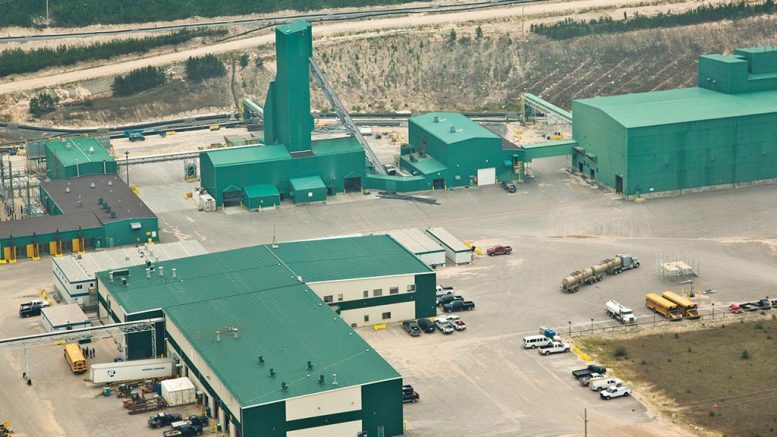Nicolas Carter is an executive vice-president of uranium at UxC LLC, one of the nuclear industry’s market research and analysis companies. Carter has 21 years of nuclear industry experience. He manages and coordinates uranium consulting projects and products, including The Ux Weekly, Uranium Market Outlook, Uranium Suppliers Annual and Uranium Production Cost Study. During his career he has provided strategic consulting to major commercial companies in the nuclear fuel industry and advised government and international organizations on uranium market and policy issues. He specializes in economic analysis and forecasting, specifically in the areas of worldwide U3O8 production capability, production costs and price projections. He recently spoke with The Northern Miner about his outlook for uranium.
The Northern Miner: Uranium doesn’t really trade like many other commodities, and buyers and sellers typically negotiate contracts privately. Utilities usually buy their fuel in four- to 10-year contracts to lock in the price. Is it true that there have been no significant long-term contracts signed in the last two years?

“By 2024, we expect global production will increase to a range of 160 million to 165 million lb., in response to higher demand and lower secondary supplies.”
Nicolas Carter
Executive vice-president of uranium, UxC LLC
Nick Carter: Uranium does trade in an active spot market, although it doesn’t have the liquidity of many other key commodities, such as coal or oil. In 2018, spot volume consisted of 88.5 million lb. U3O8 from 440 transactions, with 25% of the volume coming from utility purchases. The term market accounted for volume of 90 million lb. U3O8 from 30 transactions in 2018. Among U.S. utilities, average contract lengths for term contracts were much shorter at three years compared to an average of seven years for non-U.S. utilities. Additionally, one non-U.S. utility purchase accounted for 28 million lb. U3O8 over 10 years. Term contracting volumes have picked up slightly over the past couple of years, but most of these contracts have continued to be signed at fixed prices or market-related prices (along the forward price curve).
TNM: Where do you see uranium long-term and short-term prices going by year-end? What is your outlook for the next five years?
NC: The current spot uranium price, as of Jan. 22, is US$28.80 per lb. U3O8, and the long-term price resides at US$32 per lb. U3O8, as of the end of Dec. 31, 2018. We expect to see a continued upward trend in the spot price over the rest of the year, as producers buy lower-cost inventories and utilities in the next 11 months. For 2019, we project the spot price could push into the low- to mid-US$30s range, with gradual upward movement to the high US$30s to low US$40s five years from now.
How quickly the spot price increases will depend largely on when Cameco’s McArthur River mine resumes production, and whether Kazakhstan boosts production from excess capacity at existing in-situ recovery (ISR) mines. The degree of movement in long-term price typically lags the spot market, but we could see a considerable jump later in the year on the heels of the Section 232 investigation. As the spot price moves higher, utilities are likely to more closely consider base-escalated term contracts, especially if they have some surety regarding the longevity of their reactors. UxC expects the long-term price could reach US$36 per lb. U3O8 this year, with a price in the mid-$40s five years from now.
TNM: What is the marginal cost of production? Is it still around US$40 per pound? Is there any hope that production costs will go down?
NC: One of the major issues is that there is still a fair amount of higher-cost, inelastic production that meets the demand of many domestic nuclear programs — China, India and Russia, for example. Meanwhile, higher-cost production in Niger continues to supply part of France’s nuclear power program. The marginal production cost is in the low- to mid-US$30s, but a significant amount of low-cost (sub-US$30) production has been removed from the market in the last couple of years to lower global inventories and better align production with demand.
TNM: Is it true that some of the big uranium producers are buying product on the spot market because it’s cheaper than producing it themselves? And for the same reasons, you are seeing utilities preferring to buy what they need on the spot market because the price is so low? If you’re a utility, the question is: ‘I can buy it on spot at $28.80 per lb., or I can sign a long-term contract.’ No one wants to be the first to sign a new long-term contract, correct?
NC: Yes, Cameco has publicly stated that it is purchasing spot uranium to place into committed sales contracts. In November 2018, the company said it expected to buy between 10 million to 12 million lb. U3O8 in 2019 to meet delivery commitments and keep desired inventory levels. In the U.S., Ur-Energy and Peninsula Energy have bought spot uranium to feed into delivery commitments. Utilities, particularly in the U.S., have a preference for spot uranium or mid-term uranium contracts (two to four years) at fixed prices. The Section 232 investigation is also impacting U.S. utilities, as many of them are holding off the market until a determination is made by the Department of Commerce in the case. Furthermore, some utilities are unsure how long some of their reactors will operate without the benefit of clean energy legislation, and this uncertainty prevents them from committing to longer term-contracts.
TNM: There seems to be a consensus forming in the uranium space (again) that the market for uranium is on the brink of getting better. Would you agree, and why?
NC: The uranium market has slowly improved since the spot price bottomed out at US$18 per lb. in December 2016. Much of this improvement comes from production cutbacks and working down of low-cost inventories, in response to declining demand since the Fukushima accident in 2011. We should witness continued improvement in the market, but this could be stymied if a significant amount of production returns to the market at higher price levels. Between the McArthur River mine, which is on standby, and excess capacity at operating low-cost Kazakh ISR mines, upwards of 35 million lb. U3O8 could be brought back to the market relatively quickly.
TNM: What about secondary sources of supply?
NC: The uranium market is heavily influenced by the availability of various secondary sources of supply. These supplies differ, but they are all generally a form of inventory that is being returned to the market. As of December 2018, it is estimated that total secondary supplies in all forms account for 48 million lb. U3O8 per year, or 26% of total world supply. Going forward, these levels are expected to decline gradually.
TNM: What was global uranium production last year and in 2017? What do you expect it will be this year, and for the next few years?
NC: In 2017, global uranium production totalled 154 million lb. and fell to a preliminary 138 million lb. in 2018. For 2019, we project an estimated 138 million lb., uranium. By 2024, we expect global production will increase to a range of 160 million to 165 million lb., in response to higher demand and lower secondary supplies.
TNM: Are uranium inventories now at historic lows, as mines have been suspended?
NC: Uranium inventories among producers have declined with the recent curtailment of production globally. However, inventories among global utilities are still quite substantial — in the U.S., utility inventories totalled 124 million lb. U3O8 equivalent in 2017, or 2.7 years, while in the European Union, utility inventories totalled 127 million lb. U3O8 equivalent in 2017, or three years. Meanwhile, China continues to build its stockpile of uranium as it grows its nuclear power program, with over 450 million lb. U3O8 held. Overall, uranium inventories are on the decline as the market rebalances, but they are not near historic lows.
It’s important to note that while global inventories are still high, not all of this material is considered “mobile.” Uranium demand in 2019 is projected to be 196 million lb. U3O8. If we assume global utilities on average are carrying three years of inventory, at least 588 million lb. U3O8 would need to be held. Furthermore, a large part of China’s 450 million lb. U3O8 in inventory should be considered strategic.
More long-term contracts would likely be signed if the spot price moves higher, resulting in a smaller premium between the term and spot price, or even the spot price pushing above the long-term contract price. One issue impacting forward-term contracting for utilities is that some are unsure how much longer their nuclear plants will operate, and some utilities may be less willing to contract further forward.
TNM: Would you say we’ve seen the bottom of the cycle in uranium?
NC: The bottom of the cycle was likely reached in December 2016, when the spot price fell to US$18 per lb. U3O8. As the spot price approaches US$30 per lb. U3O8, the bigger question is: ‘At what point will we witness greater price resistance?’ As noted previously, there is still a fair amount of low-cost, idled production capacity that could be brought back relatively quickly if spot prices continues to trend higher.
TNM: Some people think that when the price turns, it will turn quickly, as utilities will rush to lock in the lowest possible long-term contract prices. Would you agree, and why?
NC: The spot price was as low as US$21 in April 2018, so it did turn rapidly in the following months, with the curtailment of more production and the rise in investor purchasing. Utilities often act with a herd-like mentality, but their elevated inventory levels provide them with some comfort in not having to jump into the market right away if spot prices spike. And as previously stated, some utilities are cautious because they are uncertain about how much longer their reactors may be operating, which limits their ability to procure uranium further forward.






Too many leakages or shaky supplies exist to substantiate the bull case for rapid uranium price increases.
Cameco has said many times it does not reopen McArthur River if sustainable prices are under US$50s.
Your outlook for the next five years is low US$40s.
And yet you are talking about if Cameco’s McArthur River mine resumes production?